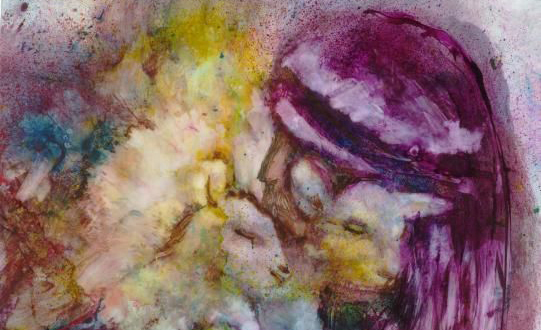WelCom May 2020:
Fourth Sunday of Easter – John 10: 1-10
Good Shepherd Sunday
1Jesus said: ‘Amen, amen, I say to you, whoever does not enter a sheepfold through the gate but climbs over elsewhere is a thief and a robber. 2But whoever enters through the gate is the shepherd of the sheep. 3The gatekeeper opens it for him, and the sheep hear his voice, as the shepherd calls his own sheep by name and leads them out. 4When he has driven out all his own, he walks ahead of them, and the sheep follow him, because they recognise his voice. 5they will not follow a stranger; they will run away from him, because they do not recognise the voice of strangers.’
6Although Jesus used this figure of speech, the Pharisees did not realise what he was trying to tell them. 7So Jesus said again, ‘Amen, amen, I say to you, I am the gate for the sheep. 8who came before me are thieves and robbers, but the sheep did not listen to them. 9I am the gate. Whoever enters through me will be saved, and will come in and go out and find pasture. 10A thief comes only to steal and slaughter and destroy; I came so that they might have life and have it more abundantly.’
Good Shepherd Sunday
John 10:1-10
Image: Deborah Nell
A reflection by Dr Elizabeth Julian rsm
What does it mean to have what Jesus has promised, life and life to the full, abundantly? That is the question provoked by the end of today’s gospel, (John 10: 1-10).
All of John 10:1-18 is a single speech in direct response to the Pharisees’ ill treatment the blind man (John 9). Split into three linked shepherd parables, we hear the first two today.
Jesus goes directly from condemning the Pharisees in John 9:39-40 to parables contrasting his own leadership with the Pharisees’ leadership.
First, the Pharisees are foolish gatekeepers failing to distinguish between a thief and a shepherd (10:1-6). Next, they are thieves bringing death, while Jesus is the sheepfold gate bringing life in abundance (John 7-10). Finally, they are hired hands who abandon the sheep at the first sign of danger, while Jesus is the good shepherd who lays down his life for his sheep, (John 10: 1-10).
Shepherd imagery is very common in passages where Jesus speaks about the authority of leaders. However, it can be a challenging image for us because:
1. We don’t like to think of ourselves as mindless sheep. Hence, a leader must respect the community’s intelligence and experience. Nor should a leader do for the community what the community can do for itself. People should not be conditioned by the shepherd to behave like sheep.
2. The image may seem very masculine. However, there were women shepherds. For example, Rachel looked after sheep (Gen 29:6) as did the bride in the Song of Solomon (1:8). Shepherding was also a communal task usually carried out by families (for example, 1 Samuel 16:11) and while there was one chief shepherd there were co-shepherds (1 Samuel 17:20). (As a nation at this time, we’ve followed an extraordinary shepherd modelling and encouraging kindness and compassion throughout.)
3. The shepherd is the one with power over the sheep, not the reverse. However, in the Book of Revelation the shepherd himself is a sheep, the Lamb of God, thus providing a strong reminder of the incarnation: the one who shepherds has first fully identified with us by becoming one with us – and has taken on the ‘smell of the sheep’ to an extraordinary level.
What does this fullness, abundance mean today [with Covid-19]? Do all ‘essential’ workers experience abundant life? Is this issue my responsibility? Is my fullness at someone else’s expense? At Earth’s expense? During lockdown, am I deepening my relationship with Jesus and my understanding of his promise of fullness of life now?
